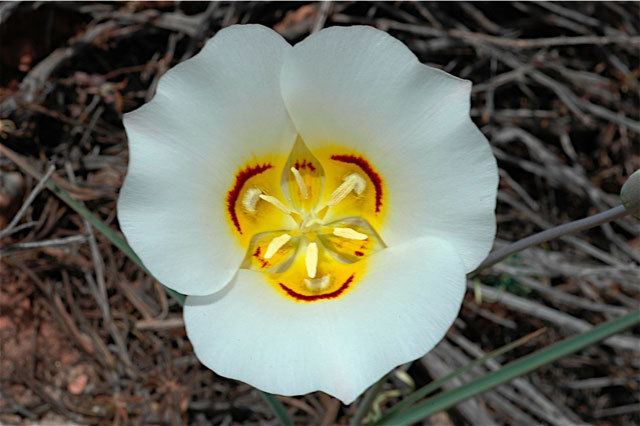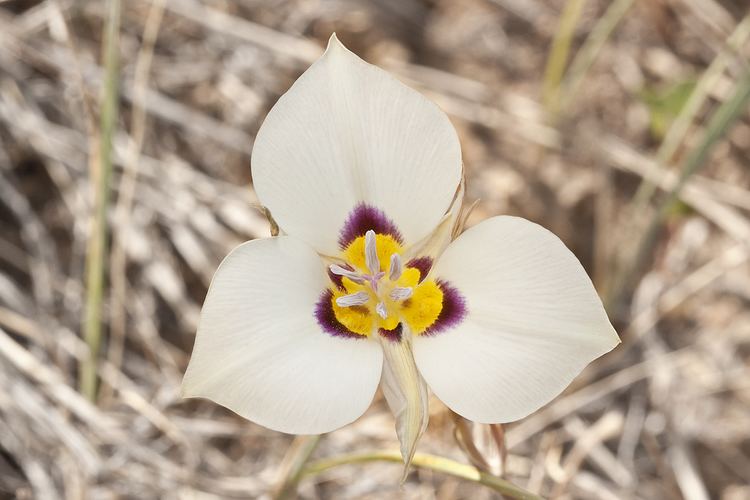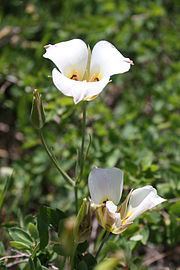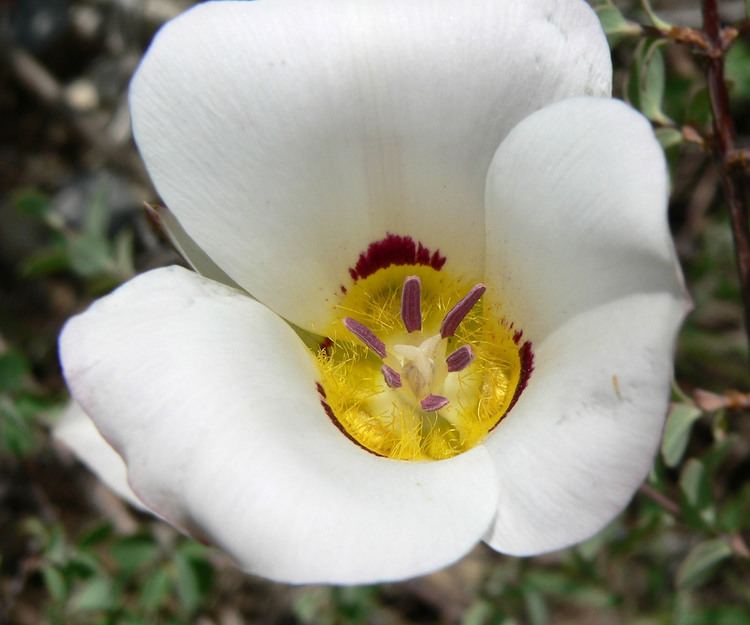Rank Species | Genus Calochortus Higher classification Calochortus | |
 | ||
Similar Calochortus, Liliaceae, California gull, Calochortus gunnisonii, Calochortus luteus | ||
Calochortus nuttallii, with the common name sego lily, is a bulbous perennial which is endemic to the Western United States.
Contents

It is the state flower of Utah.
Distribution

The plant is native to a number of western states including Idaho, Montana, Wyoming, North Dakota, South Dakota, Nebraska, Nevada, Utah, Colorado, Arizona, and New Mexico.
Description
Calochortus nuttallii are around 15–45 cm (6–18 inches) in height and have linear leaves.

Plants have 1 to 4 flowers, each with 3 white petals (and 3 sepals) which are tinged with lilac (occasionally magenta) and have a purplish band radiating from the yellow base. A yellow petaled form with deep purple bands is known from Petrified Forest National Park. The plant blooms in early summer, with flowers that can be up to 3 inches across.
Taxonomy

Calochortus nuttallii is a species within the genus Calochortus, in a sub-group generally referred to as Mariposa Lilies. The specific epithet nuttallii, named for the English botanist and zoologist, Thomas Nuttall, was ascribed to the species by the American botanists John Torrey and Asa Gray when it was officially described in 1857.
A number of former varieties of Calochortus nuttallii have been reclassified as distinct species:
Culinary
Native Americans had culinary uses for the bulbs, seeds, and flowers of the plant. Bulbs were roasted, boiled, or made into a porridge by the Hopi, Havasupai, Navajo, Paiute, Gosiute, and Ute peoples. The Hopi used the yellow flower ceremonially.
They taught the Mormon pioneer immigrants to use the bulb for badly needed food. This resulted in the sego lily being formally designated as the Utah State Flower in 1911.
Cultivation
Calochortus nuttallii is cultivated as an ornamental plant for its attractive tulip-shaped flowers and to attract/support native pollinator species. It prefers a deep, sandy soil with good drainage, and is cold-hardy. Plants can be propagated from newly formed bulblets which take two years to flower.
